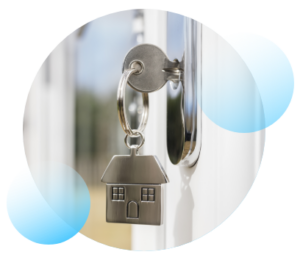Tips To Lower Your Monthly Mortgage Payment
There are four main strategies you can use to reduce the payments on your current mortgage. Let’s take a closer look at each to find the best option for your situation.
Eliminate Mortgage Insurance (PMI)
Start by reviewing the amount you still owe on your home. Lenders require mortgage insurance when the loan exceeds 80% of the house’s value. For example, if your home is worth $500,000, you would likely need PMI until you built up at least $100,000 in equity.
The good news is you have the right to request cancellation of your PMI once your loan balance drops below the 80% threshold. That’s a benefit you should absolutely take advantage of if possible, as doing so could reduce your monthly mortgage payment by hundreds.
If you’re in the process of buying a new home, try to put at least 20% down. This will save you from having to activate a PMI policy at all. If you can’t do 20%, get as close as possible so you reach the threshold to cancel your policy as fast as you can.
If you still owe more than 80% of your home’s value, this idea may not work for you yet. But keep it in the back of your mind. You’ll want to apply to cancel your PMI as soon as you can to stop paying extra on your home loan.
Explore Loan Modification Options
Your mortgage lender may offer loan modifications to people who can no longer afford conventional loan payments. This usually means adjusting your mortgage interest rate or changing your repayment length.
For example, you might be 10 years into a 30-year mortgage. If you were willing to add 10 years to the back of the loan, you could decrease your monthly payment significantly. It would just come at the price of having 30 more years of payments to your loan servicer instead of 20.
You might also qualify for a better interest rate than when you bought your home. For example, the average 30-year fixed mortgage rate is as high as it’s been in about 20 years as of late spring 2024. If that rate goes down in five years, you may be able to refinance your home loan to reduce how much interest you pay each month.
This can reduce your monthly payment by more than you might expect. For example, take a $500,000 home with a 20% down payment. Ignore property taxes and closing costs for now.
Your monthly payment for that home would be around around $2,650 if your interest rate was 7%. If you bought the same home at a 4% interest rate, your home payment would go all the way down to goes all the way down to $1,909 per month.
Make Extra Principal Payments
You can also consider making extra payments toward the principal on your home. This may sound counterintuitive if you’re looking to reduce your monthly house loan payment. But paying a little more now could open the door to the savings you’re looking for in the future.
For example, you might still owe too much on your home today to cancel your mortgage insurance. Making extra principal payments would help you get to where you can cancel your policy faster. Paying extra toward your house today could also help you qualify for better loan refinance offers in the future.
Making extra principal payments is often a smart move. But it’s easier said than done. You may need to adjust your budget, cut back on unnecessary expenses, or look for a new income stream. The key thing to remember is that paying a little more today can lead you to long-term savings. The sacrifices you make to get there will pay off in the end.
Consider Longer Mortgage Terms
Finally, you could also stretch your mortgage out over more years than you initially expected. For example, a 30-year mortgage may be a better fit for your budget, even if you’d rather pay the home off in 15 years. You may even be able to qualify for a 40-year mortgage if you really need to bring your monthly house payment down.
That being said, you should still look beyond interest rates and terms before choosing a bank for your home loan. You want a partner that will be there for you as your financial situation changes throughout the lifespan of your loan.
Community banks are great for this reason. They tend to have a smaller customer base and focus on providing personalized assistance more consistently than the big banks. But your best option will come down to personal factors and the loan offers you receive.



